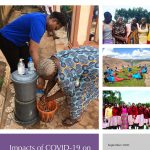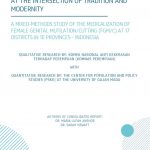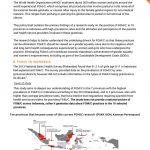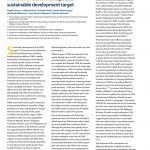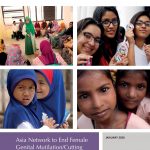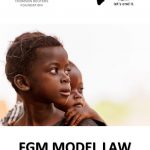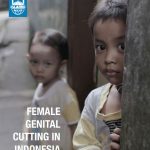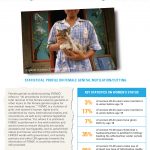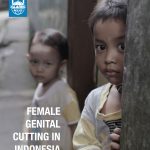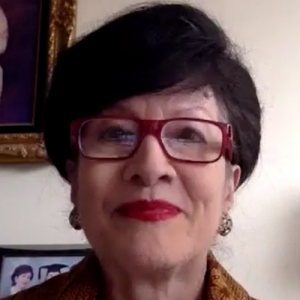Indonesia

Home | Where does FGM/C happen? | Indonesia
View all regions
View all countries
- Australia
- Benin
- Brunei
- Burkina Faso
- Cameroon
- Canada
- Central African Republic
- Chad
- Colombia
- Côte d’Ivoire (Ivory Coast)
- Denmark
- Djibouti
- Egypt
- Eritrea
- Ethiopia
- France
- Germany
- Ghana
- Guinea
- Guinea-Bissau
- Indonesia
- India
- Iran
- Iraq
- Ireland
- Jordan
- Kenya
- Kuwait
- Liberia
- Malawi
- Malaysia
- Mali
- Malta
- Mauritania
- Mexico
- Niger
- Nigeria
- Oman
- Pakistan
- Peru
- Portugal
- Russia
- Saudi Arabia
- Senegal
- Sierra Leone
- Singapore
- Somalia
- Somaliland
- South Sudan
- Spain
- Sudan
- Sweden
- Switzerland
- Tanzania
- Thailand
- The Gambia
- The Maldives
- Togo
- Uganda
- United Arab Emirates
- United Kingdom
- United States of America
- Yemen
- Zambia
- Zimbabwe
Population
266,794,980
2018 population growth rate
1.06%
Estimated prevalence among girls 0-14
49% of girls have undergone FGC in Indonesia. UNFPA estimate that by 2030, a further 15 million girls in Indonesia will be cut if efforts to end the practice are not accelerated.
Source: UNICEF
Type practised
Girls in Indonesia commonly undergo female genital cutting (FGC) Type I or Type IV. There are reports of “symbolic” cutting, and a variety of practices including use of iodine or turmeric on the clitoris, nicking, pricking, and using a chicken to peck a girl’s genitals.
A fatwa issued in 2008 by the Indonesian Ulema Council (Majelis Ulama Indonesia, MUI) recommended that female Muslims undergo the practice by eliminating membrane that covers the clitoris.
The Indonesian Ministry of Health regulation states that FGC is an act of scratching the clitoral hood, and cleaning smegma from the vulva and clitoris.
Source: UNICEF
Age
Many girls in Indonesia are cut when they are born as part of the birth package, although cutting can take place up to the age of approximately 11 years old.
UNICEF reports that around 3 in 4 girls underwent FGC when they were less that 6 months old.
Agent
Medical personnel perform 53% of reported FGC in Indonesia. Girls from the poorest backgrounds are most likely to be cut by a traditional birth attendant, whereas girls from the richest backgrounds are likely to be cut by a midwife.
Source: National Basic Health Survey (Riskesdas), 2013 via The Conversation
Legal status
Legal.
- 2006 – The Ministry of Health prohibited FGC by medical professionals.
- 2008 – Fatwa issued by Indonesian Ulema Council (MUI), recommending that female Muslims undergo FGC by medical professionals.
- 2010 – Indonesian Health Ministry overturned FGC ban, issuing a regulation specifying how medical staff should perform FGC. As a result, every hospital continued to perform FGC.
- 2014 – Health Ministry released another regulation which revoked the prior stance on how to perform FGC, but this did not expressly prohibit the practice.
Efforts to end FGC
Indonesian groups that are against the practice called for the Indonesian Health Ministry’s FGC harm-mitigating guidelines for medical professionals to be revoked, on the grounds that they could be seen as an endorsement of the practice.
Organisations including Amnesty International and the International Convention on the Elimination of all forms of Discrimination Against Women (CEDAW), protested against the regulation on the grounds that it violates child protection laws.
Organisations such as Kalyanamitra, Convention Watch and the Indonesian Women’s Coalition for Justice and Democracy (IWCJD) are currently working to address issues relating to FGC.
Challenges to progress
- Hospitals continue to offer “sunnat perempuan” (FGC) for baby girls as part of a birth package that includes vaccinations and ear piercings.
- April marks an annual mass ceremony to perform FGC, held since 1958, organised by Bandung-based organisation Yayasan Assalaam.
- In Indonesia, the practice is often seen as necessary for a woman to become a “complete Muslim”, which is supported by the fatwa issued by MUI and endorsements by religious leaders and institutions.
History
Little is known about how FGC came about in Indonesia. The government included FGC as a gender issue in its National Action Plan to End Violence against Women, published in November 2000. This plan commits the Ministry of Women’s Empowerment and the Ministry of Religion to conduct research on religious teachings that impede women’s rights.
A field study by Islamic Relief Canada found that cutting used to be practised at a later age in the recent past.
Human Development Index ranking
116 in 2018 index, based on 2017 data.
Infant mortality rate
22 deaths per 1,000 live births (2016).
Maternal mortality rate
126 deaths per 100,000 live births (2015).
Source: Human Development Index
Trends in FGC prevalence
Data on Indonesian FGC prevalence amongst girls aged 0-14 became available in 2013. There have been no changes in prevalence rates since then.
Prevalence breakdown
By region
FGC prevalence amongst young girls is highest in Gornotalo province (above 80% ) and lowest in East Nusa Tenggara.
Source: UNICEF
Resources and Media
GUIDELINES
FGM Model Law
Africa, Asia, Australia, Benin, Burkina Faso, Cameroon, Central African Republic, Chad, Côte d’Ivoire (Ivory Coast), Djibouti, Egypt, Ethiopia, Europe, Ghana, Guinea, Guinea-Bissau, India, Indonesia, Iran, Iraq, Ireland, Kenya, Liberia, Malaysia, Mali, Malta, Middle East, Niger, Nigeria, Oman, Saudi Arabia, Senegal, Sierra Leone, Singapore, Somalia, Somaliland, Spain, Sudan, Switzerland, Tanzania, The Gambia, The Maldives, Uganda, United Kingdom, United States of America (USA)
GUIDELINES
The Guide to Digital Activism
Africa, Asia, Australia, Benin, Burkina Faso, Cameroon, Central African Republic, Chad, Côte d’Ivoire (Ivory Coast), Djibouti, Egypt, Ethiopia, Europe, Ghana, Guinea, Guinea-Bissau, India, Indonesia, Iran, Iraq, Ireland, Kenya, Liberia, Malaysia, Mali, Malta, Middle East, Niger, Nigeria, Oman, Saudi Arabia, Senegal, Sierra Leone, Singapore, Somalia, Somaliland, Spain, Sudan, Switzerland, Tanzania, The Gambia, The Maldives, Uganda, United Kingdom, United States of America (USA)

